The Gaelic Athletic Association Part II - Hurling
.jpeg)
I reckon there's still a fair few of you haven't a notion what the Gaelic Athletic Association or GAA is. Fear not my international friends, for Post I linked below is the perfect place to explain what it is, what it stands for and how and why it was founded. In typical Irish style it involves a pub, a bishop and thirty men running around a field with sticks - more on that later.
There is a lot to cover on the subject of the GAA, so rather than writing too long a post which people might give up on or trying to squeeze it all into a smaller post that would lose a lot of important detail, I decided to break it up into four separate parts I through IV as shown below and this week's will cover my favourite sport in the world, Hurling.

PART II - Hurling
%20(3).jpeg)
PART III - Gaelic Football

PART IV - Handball
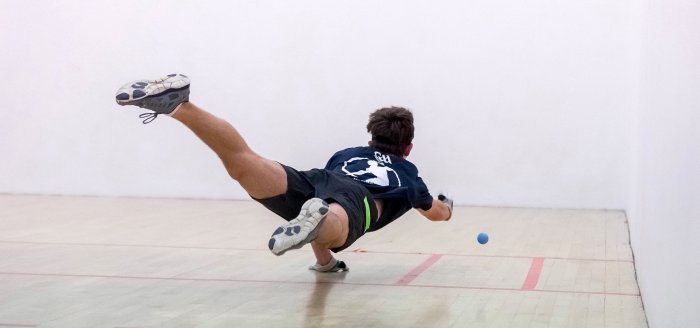
What is Hurling?
%20(6).jpeg)
Hurling is the fastest game on grass, only sports played on ice such as ice hockey are faster and sure I suppose anything played on ice will be quicker. This can be explained by the variance in
coefficients of static friction between grass and ice, but lets not get into technical jargon about physics. Hurling is also the most skilful game in the world in my humble opinion. As if that's not enough it is also one of the oldest sports there is, with its traditions set in the mists of ancient Irish history and folklore. The first written mention of hurling predates the big man himself JC by 1272 years. Suffice to say, it's pretty damn old!
Hurling is played by teams of 15 today, but God knows how many played on teams back in the early pre Jesus days. The teams are made up of a goalkeeper, six backs, two midfielders and six forwards. It is a hurley and sliothar game, played on a rectangular grass pitch with H-shaped goals at each end. The hurley or camán in the Irish language is the stick on the right handside of the
cover photo while the smaller ball is called a sliotar. The objective is to score more than the opposition team by hiting the ball through the goals or putting the ball over the bar and thereby scoring a point. Putting the ball into the net, and scoring a goal is worth three points, so goals are sought after, but they tend to be more difficult to score, as you need to get much closer to goal and past many backs and also beat the goalkeeper. The expression following was a favourite expression of my first hurling coach and its a good one:
"Take your points and the goals will come."
The team with the highest score at the end of the game of two halves wins the game and each half is 35 minutes long.
Mythical Connection
%20(5).jpeg)
Hurling is often referenced in Irish myths and legends, the most famous of which I'll briefly tell you about, without going into too much detail, as that could be a post all of it's own. The Mythical account I mention can be found in the Táin Bo Cuailgne, a legendary tale from early Irish literature, which describes the exploits of the Ulster hero Cú Chullainn, (literally Hound of Cullen) who was so named after killing a fierce guard dog by driving a hurling ball down its throat. Such stories often portray Hurling as a form of martial training and proficiency on the hurling field was equated with skill in battle. Throughout the countryside, Hurling thrived as a wild and often violent practice with few set rules. One 17th century account describes the game as being played on a plain about 200-300 yards long, with victory going to the first team to drive the ball through the goal of the opponent.
Hurling Rules
I won't reinvent the wheel here, instead here are the official rules taken from a GAA official website.
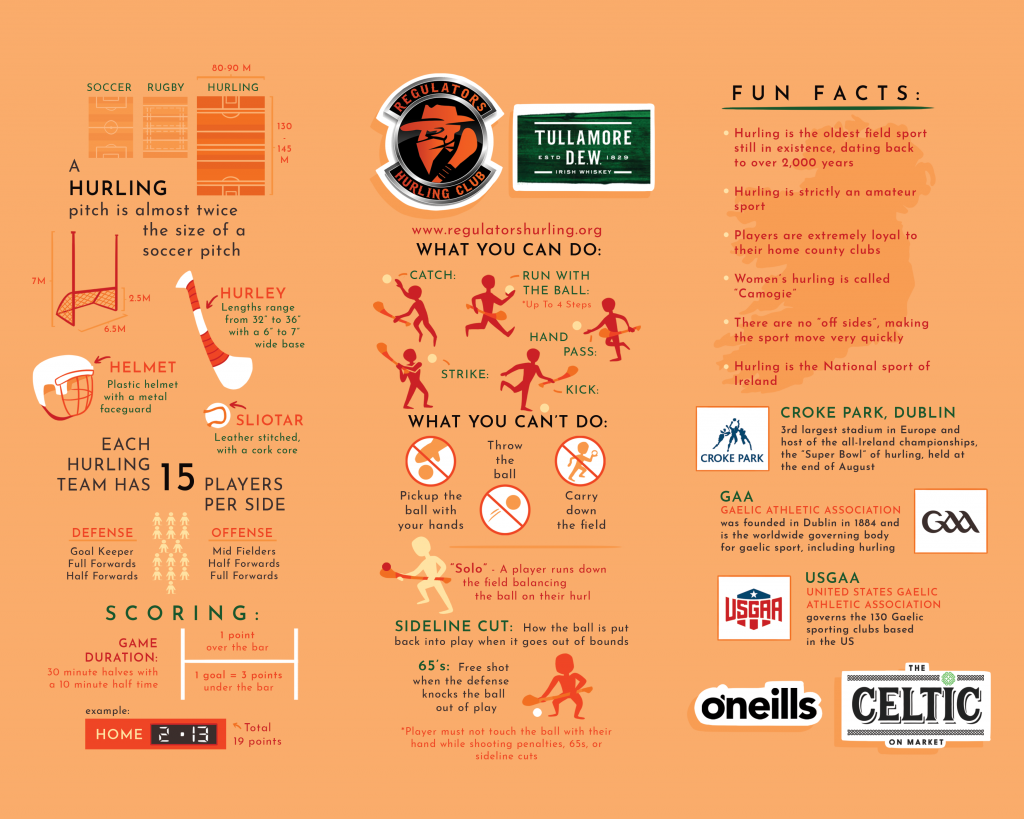
TEAMS
A game of hurling is played by two teams. Each team is comprised of up to 15 players.
The player breakdown is as follows:
1 Goalkeeper
6 Defensive Players
2 Mid-Field Players
6 Offensive Players
3 Players pair up with their opposite marks.
%20(10).jpeg)
GAME PLAY
A game or match usually consists of two halves of 25-35 minutes.
The sliotar (ball) cannot be picked up from the ground directly with the hand. The hurley must be used to roll, jab, lift or flick the sliotar into the hand.
The sliotar can be caught while in the air or bouncing along the ground.
The sliotar can be transferred to the hand at most twice. If the sliotar touches the ground, the count is reset.
The sliotar can be hit with the hurley on the ground or in the air.
The sliotar can also be kicked or hand passed, using one hand for the entire movement. The sliotar cannot be thrown.
The sliotar can be kept in the hand for at most 4 consecutive steps or the length of time to take 4 steps.
The sliotar can be balanced on the stick for an unlimited time.
FOULS
Touching the sliotar directly with a hand while it is on the ground.
Overplaying the sliotar by catching it more than twice with the hand or running for more than four steps while in the hand.
Physically challenging a player while the sliotar is not present (off the ball challenge) or by playing in an aggressive and illegal manner.
A player may not grab or hold another player’s hurley.
%20(11).jpeg)
PHYSICAL CONTACT
Hurling is a physical game and a certain amount of contact is permitted, provided it is in attempting to gain possession of the sliotar.
A fair shoulder charge is permitted.
SCORING
A point is scored when the sliotar is hit over the crossbar, which is above the goal keeper, and between the goal posts.
A goal is scored when the sliotar is hit under the cross bar and into the goal between the goal posts. A goal is worth 3 points.
Goals and points can be scored from play or from ‘set pieces’ such as a free or a side line cut.
%20(9).jpeg)
ESSENTIAL SKILLS
Picking up the sliotar via rolling the sliotar with the hurley into the hand (roll lift) or by using the hurley to scoop the sliotar into the hand (jab lift).
Balancing and running with the sliotar on the hurley (solo run).
Striking the sliotar with the hurley on the ground (ground pull or hurl) and by tossing the sliotar into the air and striking it.
Striking the sliotar while moving on the ground or in the air (doubling on the sliotar).
Free Taking: Picking the sliotar from the ground and striking it in one movement without handling the sliotar.
Sideline cut: Chipping the sliotar from the ground when it goes over a sideline.
Fielding the sliotar by catching it in the air.
Blocking a shot is when a player uses his/her hurley to prevent another player from striking the sliotar. This tackle must be done from in front of the striker as they are tossing the sliotar into the air.
‘Hooking’ is a skill where a player uses his/her hurley to prevent another player from striking the sliotar. This is done from behind the striker and his/her hurley must be intercepted as the striking motion is taking place
Hurling Levels
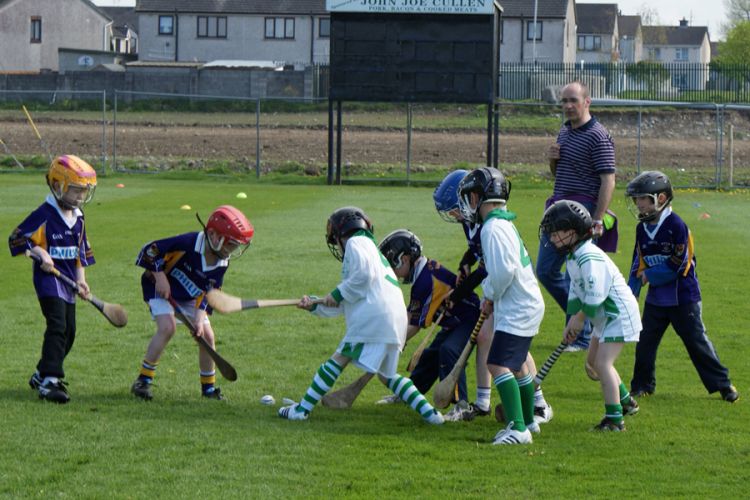
There's loads of different levels when it comes to hurling from Under 6s to Senior, Junior B to Inter County and everything in between. I suppose the first distinction to make is between club and county. Every town, village, suburb and cross roads in Ireland has a local hurling club to which they are affiliated. From the age of four or five kids tog out for training and from Under 7s up they start competing in matches. For the youngest teams it is all about taking part and enjoying the participation and as time goes by it starts to get more competitive. The beauty of the set up of this amateur sport is that you tend to play for one club for your entire career and more times than not it is your home town or village's team playing alongside your school friends and the lads you grew up with.
Then we have the inter County setup which is basically the best players from the clubs in each county. Ireland is made up of 32 counties and each had its team, along with London and New York who also have teams.
Hurling Competitions
There are dozens if not 100s of competitions across the country for club, province, all Ireland and various age brackets but easily the most sought after and famous is the Liam McCarthy cup.
The Liam McCarthy Cup
.jpeg)
This is the one that all hurlers dream of lifting aloft in Croke Park in September. The hurling championship takes place throughout the summer months, commencing in April or May and finishing up in September on the first Sunday (although they are trying to change that now - is nothing sacred!) when the two best teams in the country battle it out for the All Ireland title and the coveted Liam McCarthy cup. Here is another few looks at the trophy.
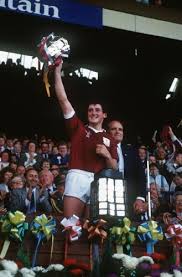%20(1).jpeg)
.jpeg)
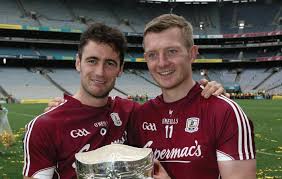%20(7).jpeg)
.jpeg)
Well, would you look at that, all Galway players with the trophy.... 😁
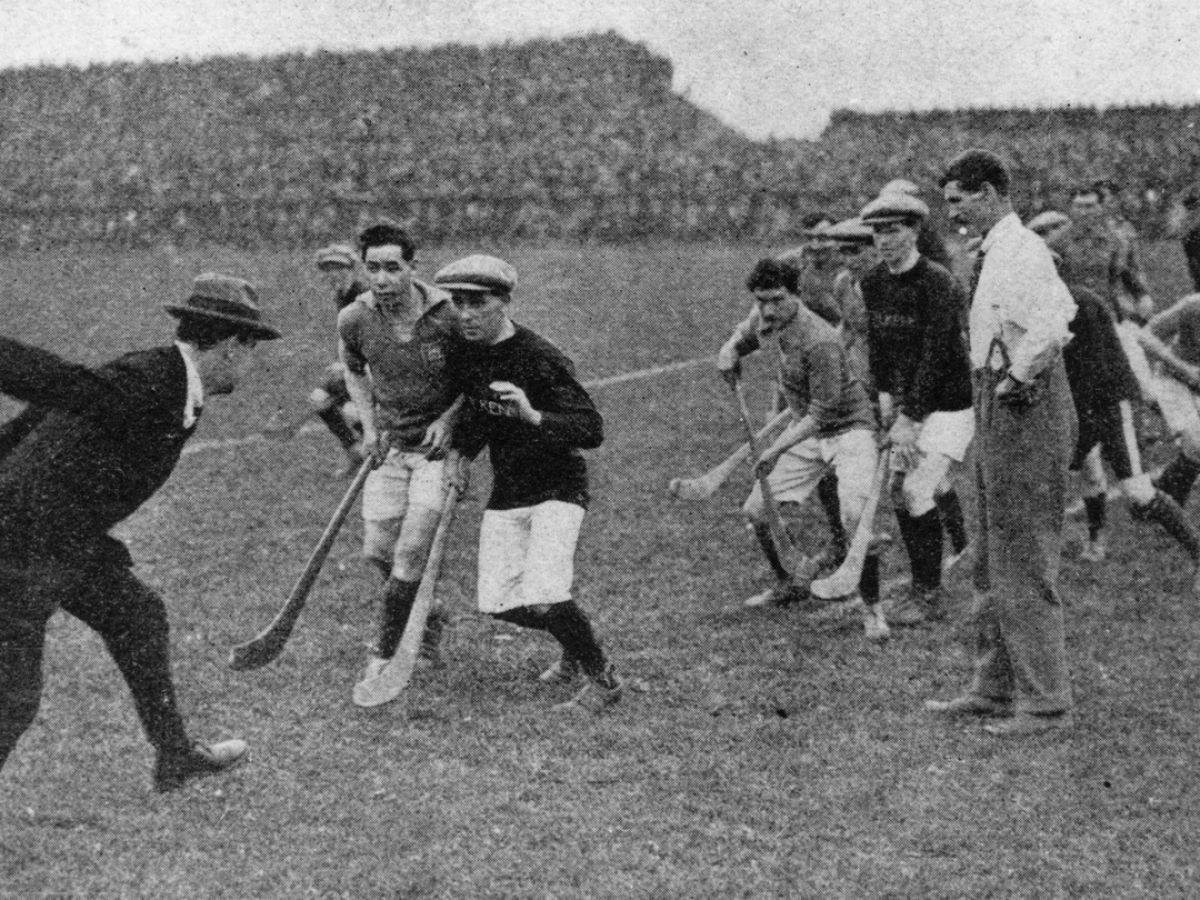.jpg)
These boys would have loved nothing more than to hoist the Liam Maguire above their heads back in the day. I'll leave you with a few videos of the game of hurling which is probably the best way to understand what it's all about. Enjoy.
That's it for this part II, join me again soon for part III when I tell you all about another Irish sport called Gaelic Football. Until then, mind yourselves, take it easy, and if ya get it, take it twice.
The photos used throughout this post are not my own and were sourced here:
https://www.sportsjoe.ie/amp/gaa/ten-reasons-why-hurling-is-better-than-football-133336
https://rochester.kidsoutandabout.com/content/irish-hurling-skills-class-perinton

I can't wait, my friend...I'm going to make my Colclough ancestors proud, drink some beer, and watch Kilenkenny hurl while streaming matches from my couch over here Wisconsin
Sounds good man. You missed the Golden age of Kilkenny back 10 to 20 years ago... They dominated and won loads of All Ireland titles.
Congratulations @ablaze! You have completed the following achievement on the Hive blockchain and have been rewarded with new badge(s):
Your next target is to reach 4000 replies.
You can view your badges on your board and compare yourself to others in the Ranking
If you no longer want to receive notifications, reply to this comment with the word
STOPCheck out the last post from @hivebuzz:
Man! THanks for this! I didn't even know I need Hurling in my life, now I do. 😁
Sliotar...Sliotar...Sliotar...What a strange word, I love it!
I say NICE ONE brother!!! Glad you like the hurling man, such a class game.
Ha ha ha, Sliotar does have a good ring to it alright 😁